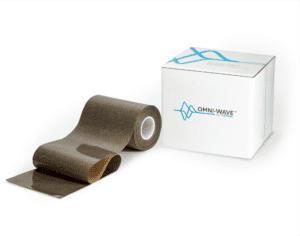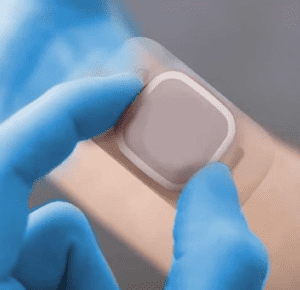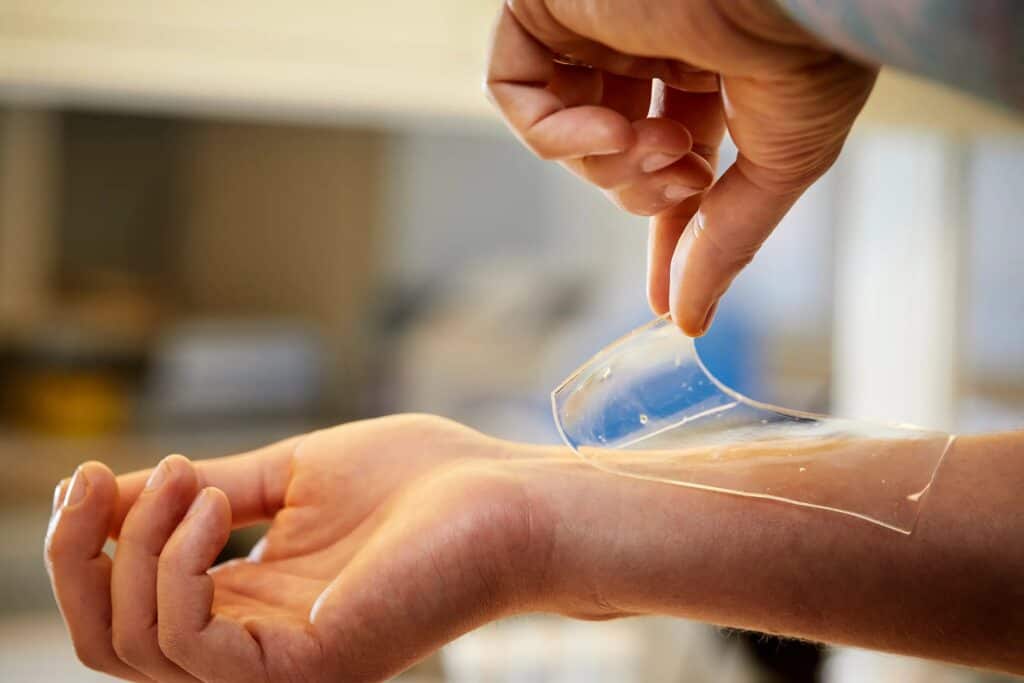What is a hydrogel?
Hydrogel is a network of polymer chains that are hydrophilic, sometimes found as a colloidal gel in which water is the dispersion medium. Essentially, a hydrogel is a three-dimensional network that can absorb and hold a significant amount of water or fluid. Hydrogels can be made from natural or synthetic polymers, and their key feature is their ability to retain large amounts of water while maintaining the structural integrity of the gel.
Due to the ability for Hydrogels to retain large amounts of water they are utilised for a wide range of medical applications, including contact lenses, as scaffolds for tissue engineering, in wound dressings, and for delivering drugs. One of the key advantages of hydrogels is their similarity to natural tissue, which makes them compatible with biological systems, leading to their extensive use in the biomedical field. They can be designed to have different properties, such as porosity and mechanical strength, depending on the intended application.

hydrogels in wound care
The use of hydrogel in wound care has gained significant momentum over the past few decades, primarily due to its unique properties that make it suitable for various types of wounds. Hydrogel wound dressings are designed to create and maintain a moist environment around the wound, which is considered crucial for the healing process. This environment facilitates cell migration, promotes granulation tissue formation, and aids in autolytic debridement, allowing for the removal of dead tissue.
Some of the key reasons for the rise in the use of hydrogel in wound care include:
- Moist Wound Healing: Hydrogel dressings provide moisture to dry wounds and absorb excess exudate from wounds with high levels of drainage, creating an optimal environment for healing.
- Pain Management: Hydrogel dressings can help alleviate pain by cooling and soothing the wound area, making them particularly beneficial for wounds that are painful or require gentle handling during the healing process.
- Non-Adherent Properties: Hydrogel dressings do not adhere to the wound bed, minimizing trauma and pain during dressing changes. This feature is especially beneficial for wounds with fragile or sensitive tissue.
- Versatility: Hydrogel dressings are suitable for a variety of wounds, including minor burns, pressure ulcers, diabetic ulcers, and surgical wounds. Their adaptability to different wound types has contributed to their widespread use in the healthcare sector.
- Minimized Scarring: By maintaining a moist environment, hydrogel dressings can potentially reduce scarring and promote the development of healthy granulation tissue, leading to improved cosmetic outcomes.
The continuous advancements in hydrogel technology, such as the development of antimicrobial hydrogels for infected wounds and the incorporation of growth factors for enhanced healing, have further contributed to their popularity in wound care. As a result, healthcare professionals increasingly consider hydrogel dressings as a valuable option for managing a broad spectrum of wounds, thus contributing to the rise in their use in the field of wound care.
Liquids Vs Dressings
Hydrogel wound dressings and liquid gels are both used in wound care, but they have distinct characteristics and applications. Understanding their differences can help in choosing the most appropriate option for specific wound types and conditions.
Here are the key differences between hydrogel wound dressings and liquid gels:
| Comparrison | Dressing | Liquid |
|---|---|---|
| Form and Structure | These are typically in the form of sheets, gauzes, or amorphous gels that can be applied directly to the wound site. They maintain a moist environment, facilitating wound healing. | These are in liquid form and can be applied to the wound as a gel or spray. They can cover a larger wound area and conform to irregular wound shapes more easily than traditional dressings. |
| Moisture Retention | They are designed to retain moisture in the wound bed, creating an optimal environment for healing. They help regulate the fluid exchange at the wound surface. | While they can also provide moisture to the wound, their ability to maintain a specific moisture level may not be as effective as that of hydrogel wound dressings. |
| Application and Handling | These are typically easier to handle and apply directly to the wound site. They come in various forms that can be cut to fit the wound shape and size. | They may require careful application to ensure even coverage over the wound area. Sprays might provide better coverage for larger wounds, but proper technique is necessary to prevent oversaturation or under-application. |
| Absorption and Exudate Management | They can absorb some exudate from the wound bed while maintaining a moist environment, promoting autolytic debridement. | Depending on the formulation, some liquid gels may have limited capacity to absorb exudate. They often create a protective barrier over the wound without significant absorption capabilities. |
| Healing Properties | These dressings can promote autolytic debridement, facilitate granulation tissue formation, and help manage pain, leading to improved wound healing outcomes. | They primarily provide a protective barrier and may have limited direct influence on wound healing properties compared to hydrogel wound dressings. |
Both hydrogel wound dressings and liquid gels have their unique advantages and applications, and the choice between the two depends on the specific requirements of the wound, the desired mode of application, and the healthcare provider’s assessment of the patient’s condition.
Read More from PolarSeal

FLEXcon and PolarSeal Discuss the OMNI-WAVE
The award winnging flexcon omni-wave! Last month, PolarSeal had the chance to catch up with our Supply Partner FLEXcon to discuss their award winning OMNI-WAVE™

Converting ideas into Electro-Medical solutions
The manufacturing process for electro-based medical devices such as ECG patches, electrodes and flexible printed circuitry requires a thorough understanding of the device, layers and

CBD: An exciting breakthrough in wound care
Wound care is an expensive and time-consuming area of primary healthcare. In 2012/13, the NHS treated 2.2 million wounds at a cost of £4.5 billion








